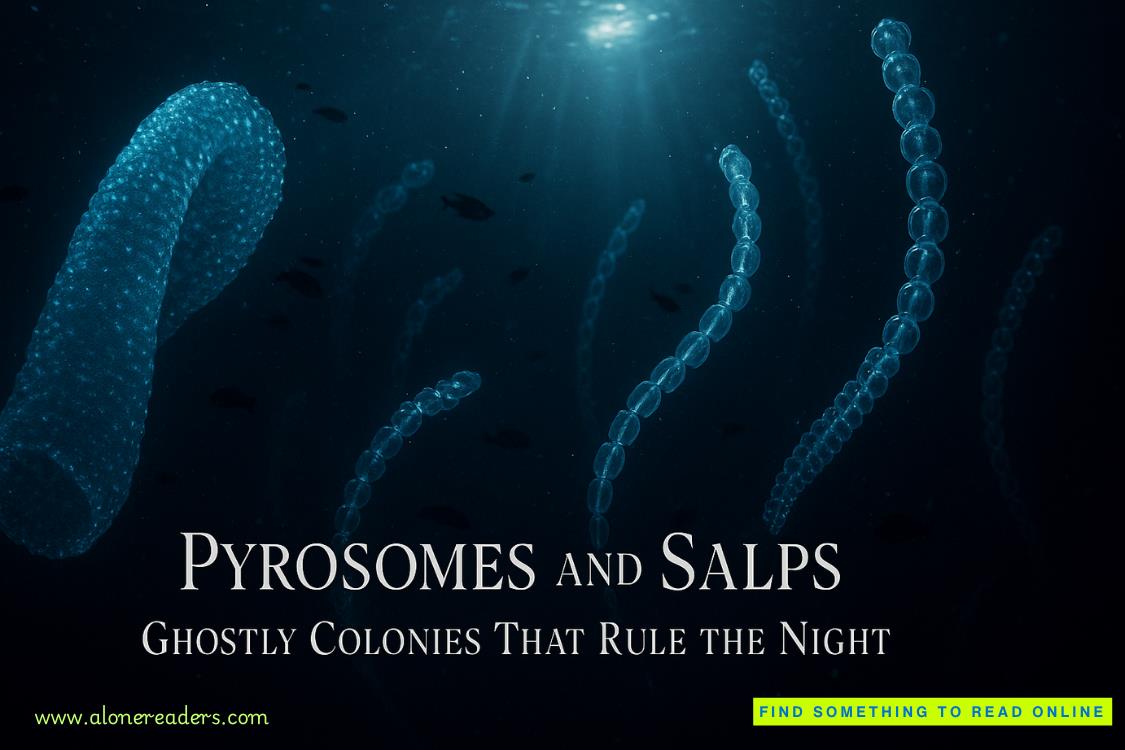Page 3 of Swan Song
“Yes, Lamont Oakley called the harbormaster. The harbormaster called us.”
The Chief turns back to the table. Kacy’s face is bathed in blue light from her phone; she gasps and looks up at him. The Nantucket Current must have just broken the story.
“Thank you, Speed,” he says. The Richardsons’ house burned down, and Coco is missing? The Chief wants to believe this is a prank, a gotcha for his final days. But he knows it’s real. If he’s honest, he would admit he feared something awful like this would happen with the Richardsons. “Tell them I’m on my way.”
1. The Cobblestone Telegraph I
Most towns have a rumor mill. We here on Nantucket have what’s known as the cobblestone telegraph—and Blond Sharon has long been the switchboard operator. Everything goes through her.
But this summer, a twist: Blond Sharon is now the topic of gossip. Everyone on the island is talking about how Blond Sharon’s husband, Walker, left her for his physical therapist, a woman who is less than half Walker’s age. Walker tore his ACL skiing over the holidays, and in March, he announced that he’d fallen in love with “Bailey from PT.” He was leaving Sharon; he wanted a divorce.
Ouch, we thought. It’s hardly a new story, a middle-aged man leaving his wife for a younger woman, but we thought Blond Sharon’s family was bulletproof. Sharon is an exemplary mother. She secured her sixteen-year-old twin girls, Sterling and Colby, coveted internships at the Nantucket Historical Association (unpaid, but so good for their college applications). Sharon’s thirteen-year-old son, Robert, has type 1 diabetes, and Sharon monitors his blood sugar using an app on her phone. We feel bad that Sharon has been dropped like a hot potato at the age of fifty-four, but none of us feel guilty talking about it. When we think of how many hours Blond Sharon has spent blabbing about other people’s business, we can’t help but see this moment as a kind of poetic justice.
The good news, we all think, is that Sharon has her sister, Heather, to lean on. Sharon and Heather are polar opposites: Sharon is blond and Heather is brunette; Sharon is a stay-at-home mom, Heather is an attorney with the corporate finance division of the SEC in Washington. Blond Sharon is like the flight attendant who overshares about the pilot’s hemorrhoids and the famous talk-show host seated in 3C; Heather is the black box. The only thing Heather has ever done with a secret is keep it.
Heather is also the voice of reason. When Sharon admits that what bothers her most about Walker leaving her is being a cliché, Heather says, “Just promise not to wear statement necklaces and fake eyelashes and take cruises in the Mediterranean looking for a rich replacement husband.”
Sharon blinks. That had been her plan exactly.
“This is your chance to reinvent yourself,” Heather says. “Do you remember the quote you taped to your bedroom mirror when we were young?”
It wasn’t a quote, Sharon thinks. It was the last two lines of the Mary Oliver poem “The Summer Day”: Tell me, what is it you plan to do / with your one wild and precious life? Sharon discovered the poem one summer when she worked shelving books at the New Canaan Public Library. The lines, which Sharon typed out on her father’s electric Smith Corona and taped to her bedroom mirror, had always seemed like a challenge—but when she thinks about it now, it feels like one she has failed to meet. She has spent her one wild and precious life selecting wallpaper and scheduling the pool cleaners; she has spent it reading People magazine in line at the market and fruitlessly trying to improve her backhand. She has spent it scrolling through her phone.
But there is something that Sharon has dreamed of doing, something we never would have guessed.
It has been Blond Sharon’s secret lifelong desire to become an author.
Well, we think, she’s certainly demonstrated her keen interest in other people’s stories, the seedier and more salacious, the better. Since beloved local novelist Vivian Howe died a few years ago, there has been no one to write about the dramas that occur every summer on Nantucket. Could Blond Sharon take her place? Does she know the first thing about writing fiction?
Summer is a prime time to embark on a self-improvement project, Sharon thinks—and she signs up for a virtual creative-writing workshop. The instructor’s name is Lucky Zambrano, which makes it sound like he’s a Mob boss, but in fact, he’s a recently retired Florida Atlantic University English professor. He tells his students that he’s teaching this online class to keep busy because his wife passed away last year.
Lucky is a widower, Sharon thinks. She sits up straighter and yanks at the bottom of her blouse to show a bit more cleavage. There are two other students in the Zoom class, both of them women and both about Sharon’s age, though neither quite as well preserved as she is. One is named Willow, the other Nancy.
“Oh,” Lucky says. “Nancy was my wife’s name.”
Does this give Nancy an advantage with Lucky? Sharon wonders. Nancy has one of those short, no-nonsense haircuts that means she’s probably already married. Willow is wearing long feather earrings and has never seen a Botox needle.
“Let’s get to your first assignment,” Lucky says. “Character. What I’d like you to do is venture out into the world somewhere, could be your local farmers’ market, your office building—Nancy, I see you work at the RMV, that’s a fertile environment—and choose two individuals to observe. Then I’d like you to dramatize a scene between the two with an eye toward developing this scene into a story. The late great novelist John Gardner famously said that there are only two plots: One, a person goes on a journey, and two, a stranger comes to town.” Lucky pauses and Sharon furiously scribbles on her legal pad. Sharon is hopelessly old-school; both Nancy and Willow type on their laptops. “Go forth and observe, then, my friends. We’ll meet again next week and you can share what you’ve written with the group.”
When Sharon clicks Leave Meeting, she’s energized and, dare she say, inspired. She won’t be one of those orange divorcées on a cruise ship; she’s going to create a dazzling second act for herself as a published author. She snatches up her legal pad, ready to venture out into the world to observe. In a way, this has always been Sharon’s mission—to find out what’s really going on. But now she has a more noble mission. Now she’s going to write about it.
Sharon plops herself down on a bench at the Steamship Authority ferry terminal. Where better to observe a person going on a journey or a stranger coming to town? Sharon wears her enormous Céline sunglasses and a white tennis visor, though those of us who are waiting for the ferry to arrive—notably Bob from Old Salt Taxi and Romeo, who works for the Steamship Authority—notice Sharon right away.
Why, Romeo wonders, does Blond Sharon have a notebook and pen at the ready? He can’t think of a single reason, but Romeo loves a mystery… especially one that involves a beautiful woman.
As soon as Sharon gets settled, the boat pulls in. She scans the people coming down the ramp. Does anyone look promising? No, no, no; it’s all day-trippers, the women in roomy sundresses, the men in cargo shorts, everyone in ugly sensible shoes. Fanny packs, backpacks. Why is the casual traveler in America so decidedly unstylish?
Her eyes latch onto a young woman over by the luggage cart. She has a look not seen often on Nantucket—she’s like a human piece of art. Her black hair is short and cut in angles and spikes. She’s wearing a tight black tank that leaves an inch of her midriff bare. She has a tattoo of a flamingo on her left shoulder and another that looks like a gecko just above her ankle. Sharon sees a gemstone sparkling in the girl’s nose as she lifts a lumpy army-green duffel off the luggage cart. This person is more than a casual tourist; this is someone arriving for the summer.
A stranger comes to town! Sharon thinks. She abandons her spot on the bench and creeps over to get a closer look. Should she offer this girl a ride to wherever she’s going? Sharon is about to tap the girl on the shoulder when a second young woman appears. This young woman has honey-colored hair cut in a neat, sassy bob and she’s wearing slim white jeans and a fitted navy blazer. She hoists a brightly patterned Vera Bradley bag off the cart. Sharon has the exact same bag at home.
“Here, take my number, Coco,” the second woman says. “Keep in touch, okay? Let me know where you end up staying.”
“I’ll figure it out,” Coco says. “I always do. And hey, Kacy, thanks for the chowder—it meant a lot.”
The second woman, Kacy, waves a hand as if to say It was nothing. She walks into the snarl of traffic in the parking lot. Coco’s shoulders sag as she pulls out her phone. The poor girl has come to Nantucket with a giant duffel bag and doesn’t have a place to stay? Sharon is about to offer to walk her over to Visitor Services to see about available hotel rooms—but then a couple of things happen in rapid succession. One is that a black Suburban pulls up, and Romeo from the Steamship opens the tailgate door and slides Kacy’s suitcases into the back. It isn’t Romeo’s job to help with luggage, so Kacy must be some kind of VIP. A second later, Sharon realizes the person driving the Suburban is the chief of police, Ed Kapenash. The young woman must be his daughter. Yes! Kacy Kapenash! Last Sharon heard, she was working as a nurse out in San Francisco. She must be back for a visit.
The second thing that happens is that Sharon’s phone rings. Inwardly, she groans. Before Walker left, Sharon’s phone was attached to her ear; this had been one of Walker’s major complaints (but how was Sharon supposed to get any news if she didn’t chat?). In a few short months, Sharon has turned into a full-blown Millennial when it comes to talking on the phone—she’ll do anything to avoid it.















